-
抗体試薬
- フローサイトメトリー用試薬
-
ウェスタンブロッティング抗体試薬
- イムノアッセイ試薬
-
シングルセル試薬
- BD® AbSeq Assay
- BD Rhapsody™ Accessory Kits
- BD® OMICS-One Immune Profiler Protein Panel
- BD® Single-Cell Multiplexing Kit
- BD Rhapsody™ TCR/BCR Next Multiomic Assays
- BD Rhapsody™ Targeted mRNA Kits
- BD Rhapsody™ Whole Transcriptome Analysis (WTA) Amplification Kit
- BD® OMICS-Guard Sample Preservation Buffer
- BD Rhapsody™ ATAC-Seq Assays
- BD® OMICS-One Protein Panels
-
細胞機能評価のための試薬
-
顕微鏡・イメージング用試薬
-
細胞調製・分離試薬
-
- BD® AbSeq Assay
- BD Rhapsody™ Accessory Kits
- BD® OMICS-One Immune Profiler Protein Panel
- BD® Single-Cell Multiplexing Kit
- BD Rhapsody™ TCR/BCR Next Multiomic Assays
- BD Rhapsody™ Targeted mRNA Kits
- BD Rhapsody™ Whole Transcriptome Analysis (WTA) Amplification Kit
- BD® OMICS-Guard Sample Preservation Buffer
- BD Rhapsody™ ATAC-Seq Assays
- BD® OMICS-One Protein Panels
- Japan (Japanese)
-
Change country/language
Old Browser
Looks like you're visiting us from United States.
Would you like to stay on the current country site or be switched to your country?
BD Pharmingen™ PE Mouse Anti-Human BCMA (CD269)
クローン 19F2.rMAb (RUO)

Flow cytometric analysis of BCMA (CD269) expression on Human U266 cells. Cells from the Human U266 (Myeloma, ATCC® TIB-196™) cell line were preincubated with Human BD Fc Block™ (Cat. No. 564219/564220) and stained with either PE Mouse IgG1, κ Isotype Control (Cat. No. 554680; dashed line histogram) or PE Mouse Anti-BCMA (CD269) antibody (Cat. No. 570546/570547; solid line histograms) at 1 ug/test. DAPI (4',6-Diamidino-2-Phenylindole, Dihydrochloride) Solution (Cat. No. 564907) was added to cells right before analysis. The fluorescence histogram showing BCMA (CD269) expression] or [Ig Isotype control staining] was derived from gated events with the forward and side light-scatter characteristics of viable (DAPI-negative) cells. Flow cytometry and data analysis were performed using a BD Celesta™ Cell Analyzer System and FlowJo™ Software. Data shown on this Technical Data Sheet are not lot specific.

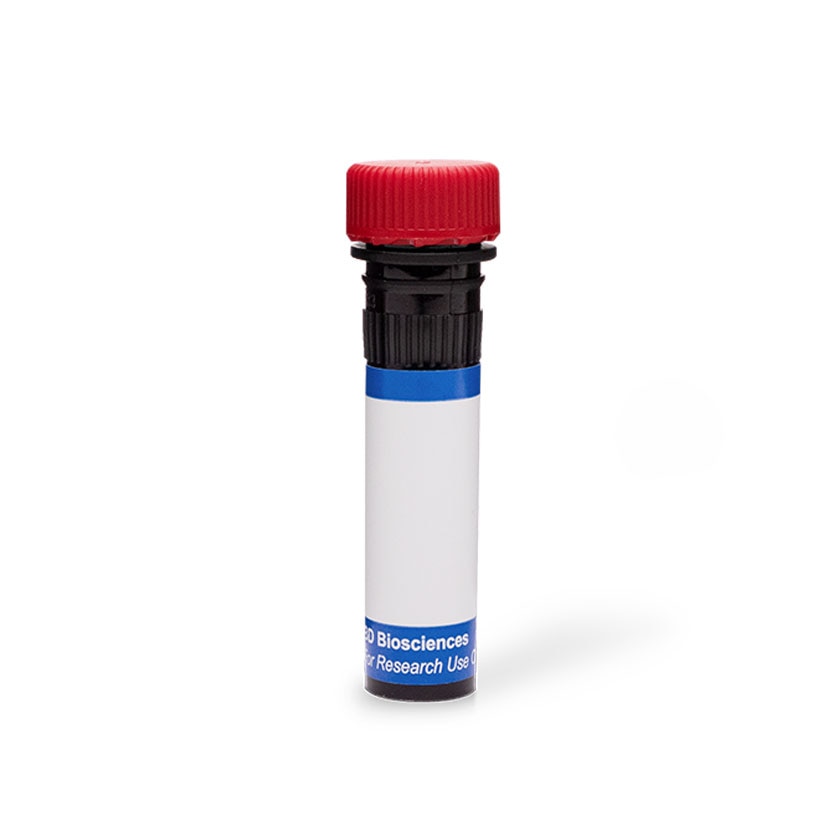
Flow cytometric analysis of BCMA (CD269) expression on Human U266 cells. Cells from the Human U266 (Myeloma, ATCC® TIB-196™) cell line were preincubated with Human BD Fc Block™ (Cat. No. 564219/564220) and stained with either PE Mouse IgG1, κ Isotype Control (Cat. No. 554680; dashed line histogram) or PE Mouse Anti-BCMA (CD269) antibody (Cat. No. 570546/570547; solid line histograms) at 1 ug/test. DAPI (4',6-Diamidino-2-Phenylindole, Dihydrochloride) Solution (Cat. No. 564907) was added to cells right before analysis. The fluorescence histogram showing BCMA (CD269) expression] or [Ig Isotype control staining] was derived from gated events with the forward and side light-scatter characteristics of viable (DAPI-negative) cells. Flow cytometry and data analysis were performed using a BD Celesta™ Cell Analyzer System and FlowJo™ Software. Data shown on this Technical Data Sheet are not lot specific.

Flow cytometric analysis of BCMA (CD269) expression on Human U266 cells. Cells from the Human U266 (Myeloma, ATCC® TIB-196™) cell line were preincubated with Human BD Fc Block™ (Cat. No. 564219/564220) and stained with either PE Mouse IgG1, κ Isotype Control (Cat. No. 554680; dashed line histogram) or PE Mouse Anti-BCMA (CD269) antibody (Cat. No. 570546/570547; solid line histograms) at 1 ug/test. DAPI (4',6-Diamidino-2-Phenylindole, Dihydrochloride) Solution (Cat. No. 564907) was added to cells right before analysis. The fluorescence histogram showing BCMA (CD269) expression] or [Ig Isotype control staining] was derived from gated events with the forward and side light-scatter characteristics of viable (DAPI-negative) cells. Flow cytometry and data analysis were performed using a BD Celesta™ Cell Analyzer System and FlowJo™ Software. Data shown on this Technical Data Sheet are not lot specific.


BD Pharmingen™ PE Mouse Anti-Human BCMA (CD269)

Regulatory Statusの凡例
Any use of products other than the permitted use without the express written authorization of Becton, Dickinson and Company is strictly prohibited.
Preparation and Storage
推奨アッセイ手順
BD® CompBeads can be used as surrogates to assess fluorescence spillover (compensation). When fluorochrome conjugated antibodies are bound to BD® CompBeads, they have spectral properties very similar to cells. However, for some fluorochromes there can be small differences in spectral emissions compared to cells, resulting in spillover values that differ when compared to biological controls. It is strongly recommended that when using a reagent for the first time, users compare the spillover on cells and BD® CompBeads to ensure that BD® CompBeads are appropriate for your specific cellular application.
Product Notices
- Please refer to www.bdbiosciences.com/us/s/resources for technical protocols.
- Caution: Sodium azide yields highly toxic hydrazoic acid under acidic conditions. Dilute azide compounds in running water before discarding to avoid accumulation of potentially explosive deposits in plumbing.
- Since applications vary, each investigator should titrate the reagent to obtain optimal results.
- For fluorochrome spectra and suitable instrument settings, please refer to our Multicolor Flow Cytometry web page at www.bdbiosciences.com/colors.
- An isotype control should be used at the same concentration as the antibody of interest.
- Please refer to http://regdocs.bd.com to access safety data sheets (SDS).
- For U.S. patents that may apply, see bd.com/patents.
関連製品
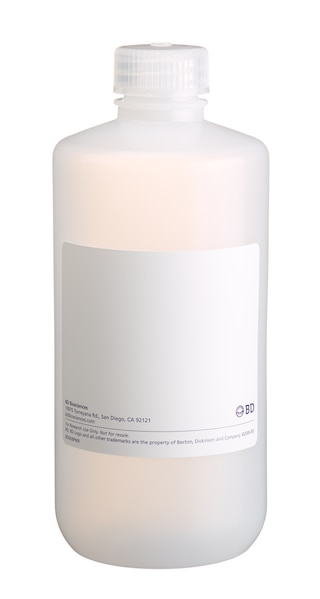
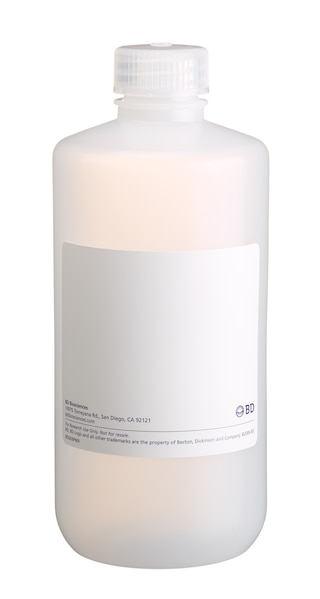
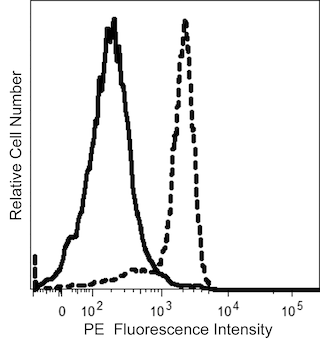
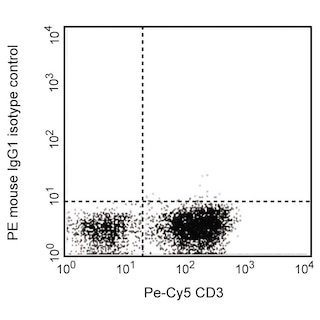

19F2.rMAb is a recombinant monoclonal antibody derived from 19F2 hybridoma cells. The 19F2.rMAb specifically recognizes B cell maturation antigen (BCMA) which is also known as CD269. CD269 (BCMA) is an ~27 kDa type III transmembrane glycoprotein that is encoded by TNFRSF17 (TNF receptor superfamily member 17). The extracellular domain of this receptor has one TNFR-Cys repeat and is followed by a transmembrane region and a cytoplasmic domain. CD269 (BCMA) is expressed as a homotrimer on germinal center B cells, plasmablasts, and plasma cells. It is expressed at elevated levels in B cell malignancies including increased expression by malignant plasma cells in multiple myeloma and has been associated with certain autoimmune diseases like systemic lupus erythematosus. This receptor binds to and transduces intracellular signaling in response to its ligands, CD257 (aka, BAFF and Blys) and CD256 (APRIL). CD269 (BCMA) functions as a B cell maturation factor that is essential for the survival of long-lived bone marrow plasma cells. A soluble form of CD269 (BCMA) is generated by γ-secretase that can regulate plasma cell survival and differentiation. Soluble CD269 (BCMA) may also act as a decoy receptor that can regulate the availability of BAFF and APRIL ligands.

Development References (11)
-
Avery DT, Ellyard JI, Mackay F, Corcoran LM, Hodgkin PD, Tangye SG. Increased expression of CD27 on activated human memory B cells correlates with their commitment to the plasma cell lineage.. J Immunol. 2005; 174(7):4034-42. (Biology). View Reference
-
Avery DT, Kalled SL, Ellyard JI, et al. BAFF selectively enhances the survival of plasmablasts generated from human memory B cells.. J Clin Invest. 2003; 112(2):286-97. (Biology). View Reference
-
Bae J, Samur M, Richardson P, Munshi NC, Anderson KC. Selective targeting of multiple myeloma by B cell maturation antigen (BCMA)-specific central memory CD8+ cytotoxic T lymphocytes: immunotherapeutic application in vaccination and adoptive immunotherapy.. Leukemia. 2019; 33(9):2208-2226. (Clone-specific: Flow cytometry). View Reference
-
Berahovich R, Zhou H, Xu S, et al. CAR-T Cells Based on Novel BCMA Monoclonal Antibody Block Multiple Myeloma Cell Growth.. Cancers (Basel). 2018; 10(9):323. (Clone-specific: Flow cytometry). View Reference
-
Carpenter RO, Evbuomwan MO, Pittaluga S, et al. B-cell maturation antigen is a promising target for adoptive T-cell therapy of multiple myeloma.. Clin Cancer Res. 2013; 19(8):2048-60. (Biology). View Reference
-
Friedman KM, Garrett TE, Evans JW, et al. Effective Targeting of Multiple B-Cell Maturation Antigen-Expressing Hematological Malignances by Anti-B-Cell Maturation Antigen Chimeric Antigen Receptor T Cells.. Hum Gene Ther. 2018; 29(5):585-601. (Clone-specific: Flow cytometry). View Reference
-
Laurent SA, Hoffmann FS, Kuhn PH, et al. γ-Secretase directly sheds the survival receptor BCMA from plasma cells.. Nat Commun. 2015; 6:7333. (Biology). View Reference
-
Lee L, Draper B, Chaplin N, et al. An APRIL-based chimeric antigen receptor for dual targeting of BCMA and TACI in multiple myeloma.. Blood. 2018; 131(7):746-758. (Clone-specific: Flow cytometry). View Reference
-
Nobari ST, Nojadeh JN, Talebi M. B-cell maturation antigen targeting strategies in multiple myeloma treatment, advantages and disadvantages.. J Transl Med. 2022; 20(1):82. (Biology). View Reference
-
Schuh E, Musumeci A, Thaler FS, et al. Human Plasmacytoid Dendritic Cells Display and Shed B Cell Maturation Antigen upon TLR Engagement.. J Immunol. 2017; 198(8):3081-3088. (Biology). View Reference
-
Zola H, Swart B, Nicholson I, Voss E. CD269. In: Zola H. Leukocyte and stromal cell molecules : the CD markers. Hoboken, N.J.: Wiley-Liss; 2007: p. 430. View Reference
Please refer to Support Documents for Quality Certificates
Global - Refer to manufacturer's instructions for use and related User Manuals and Technical data sheets before using this products as described
Comparisons, where applicable, are made against older BD Technology, manual methods or are general performance claims. Comparisons are not made against non-BD technologies, unless otherwise noted.
For Research Use Only. Not for use in diagnostic or therapeutic procedures.